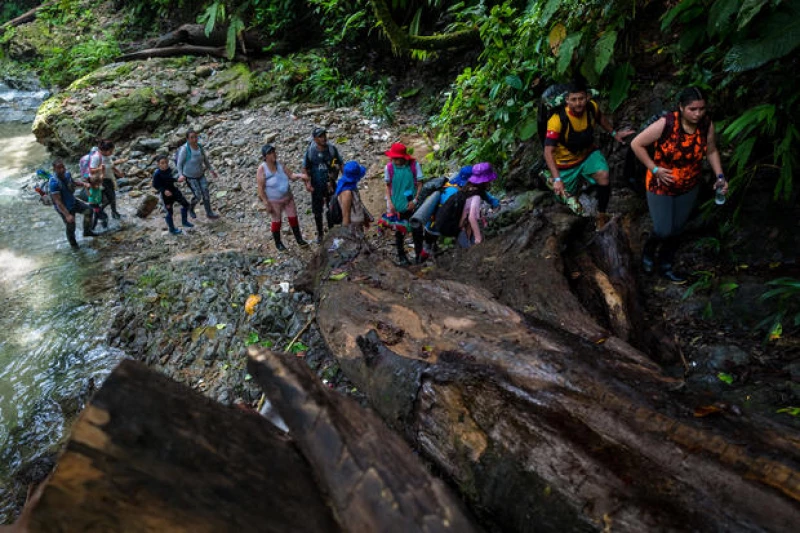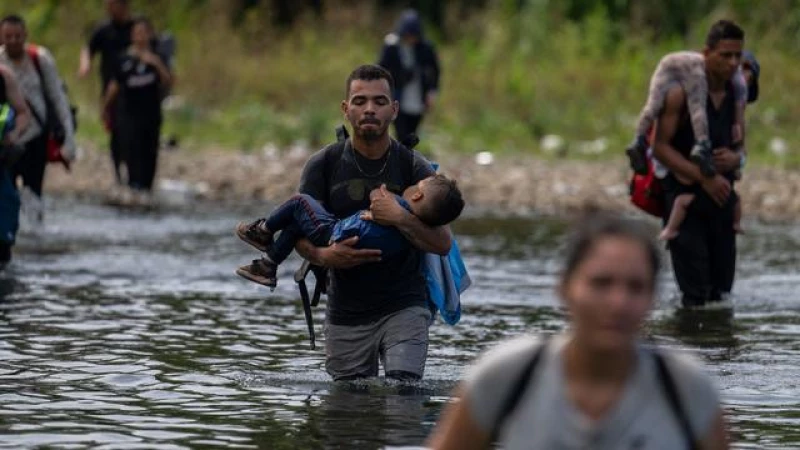US Immigration Officials to Assist Panama in Screening and Deporting Migrants
McAllen, Texas — The Biden administration is planning to deploy a team of U.S. immigration officials to Panama to help local authorities screen and deport migrants traveling through the Central American country, which is a key transit point for those hoping to reach America's southern border, two U.S. officials with knowledge of the plans told CBS News.
The Department of Homeland Security has identified a team of officials with experience screening asylum-seekers and deporting migrants that will be dispatched to Panama once a final agreement is reached with that country's government, which asked for the assistance, the U.S. government officials said, requesting anonymity in order to discuss internal plans.
The objective is to have personnel from various DHS agencies, including U.S. Citizenship and Immigration Services and Immigration and Customs Enforcement train and assist Panamanian authorities as they grapple with an extraordinary flow of migrants into the Darién Gap, a rugged jungle that connects Panama with South America.

Nearly 500,000 migrants, half of them women and children, have crossed the once-impenetrable Darién jungle on foot this year, a record and once-unthinkable number, according to Panamanian government data. The vast majority of migrants have come from Venezuela, which has seen millions of its citizens flee in recent years to escape a widespread economic crisis and authoritarian rule.
The Biden administration plans to train Panamanian officials to screen migrants for humanitarian protection and deport those who don't qualify. It is also planning to help Panama secure government contracts to bolster its deportation operations, a senior U.S. official said.
The novel initiative would be subsidized by U.S. State Department funds. The administration has notified Congress that it intends to divert the money to DHS to fund the effort, which will only begin once Panama and the U.S. finalize a formal agreement.
The "goal of the program is to provide technical assistance and other capacity building so that they can basically create a more robust program to repatriate migrants who do not establish a legal basis to remain in Panama," the senior U.S. official told CBS News.
Representatives for Panama's embassy in the U.S. did not respond to requests for comment.
The U.S. plans underscore the Biden administration's desperation to reduce the unprecedented levels of migration to the southern border over the past three years. In fiscal year 2023, U.S. Border Patrol recorded over 2 million apprehensions of migrants who entered the country without authorization – only the second time the agency has surpassed that tally.
The plans also highlight the degree to which the United States, regardless of political party, relies on other countries in the region to handle the increasingly complex migration patterns that have grown in both sheer numbers and diversity of nationalities and demographics.
Indeed, the current administration has been actively working to persuade Latin American countries to prevent migrants heading to the United States by offering humanitarian protection to those who qualify, while deporting those who do not. Nineteen countries agreed to these requests when they signed the U.S.-brokered Los Angeles Declaration on Migration and Protection last year.
The administration's approach to managing migration involves diplomatic efforts and a combination of penalties for illegal border crossings, such as a rule that limits eligibility for asylum, as well as expanded opportunities for legal migration to the United States.
This strategy showed some success in the late spring, as illegal border crossings dropped to a two-year low. However, this downward trend was quickly reversed in the summer, with unlawful crossings reaching the highest level of the year in September, driven in part by a record number of Venezuelans arriving.
According to a senior U.S. official, the number of illegal border entries in October saw a decrease, although they still remained at historically high levels. The official attributed this drop in migration to the U.S. and to Panama to the implementation of deportation flights to Venezuela. Additionally, crossings along the Darién jungle in October also significantly decreased.







